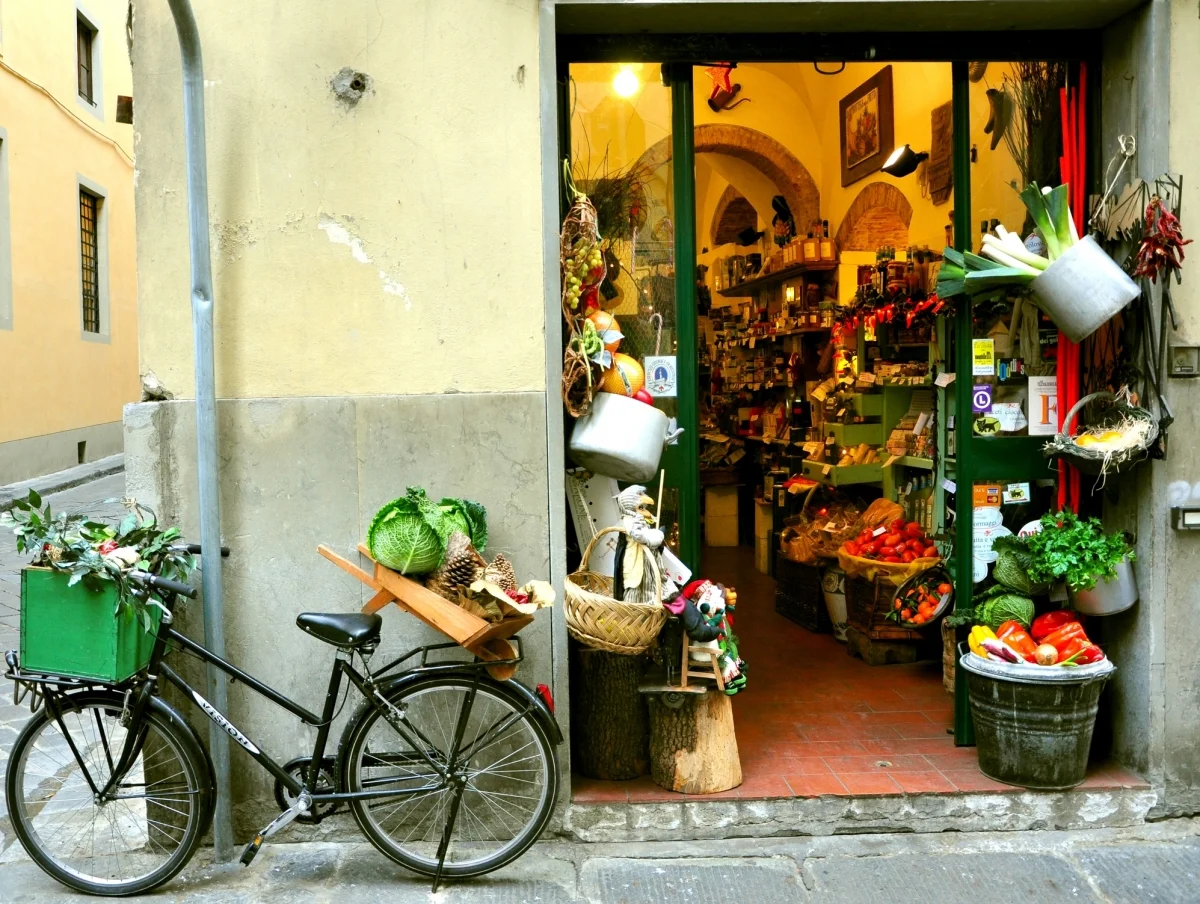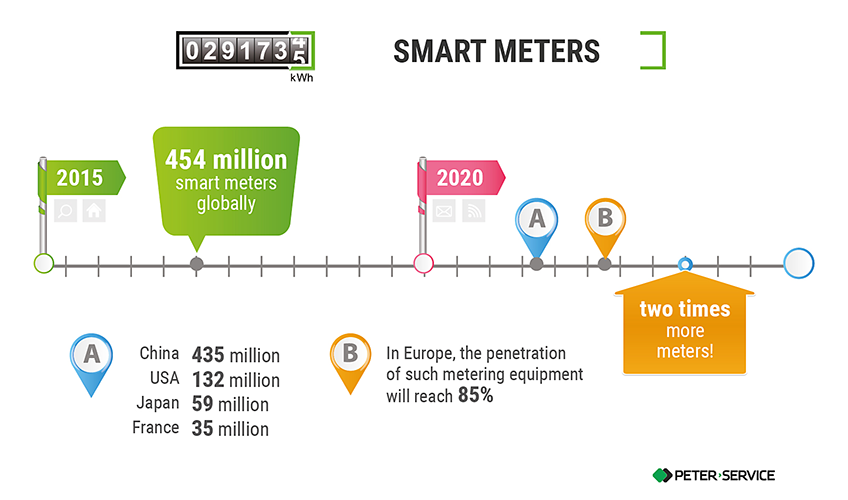A Smart City, a city where happy people live
In which way a smart city is different from other cities?
Most probably, you have heard the terms "smart city" or "future city". Many of you already live in smart cities without even knowing about it. Some question the existence of smart cities and are skeptical calling this new trend "a set of beautiful slogans and attractive pictures". What is the difference between smart cities and other cities? How did intelligent technologies affect the system of local governance and all of us together? How to save millions of euro on matches every year? And why smart city residents are happier than others?
The term "smart city" in Russian is believed to be literally translated from the eponymous American term (the word "smart" in Russian literally means "savvy and knowledgeable"). Initially, the word "smart" was not related to intelligent systems at all, rather it was an acronym inspired by five words. In 1954, an economist and management theorist Peter Drucker came up with a formula of efficient city governance and called it the SMART. Therefore, the first key difference of a smart city is the efficient governance.

How does it work?
Ellie Cosgrave, Doctor of Technical Sciences, PhD, Director, ScienceGrrl NGO, believes that "smart cities change the style of communication of urban environment stakeholders – citizens and municipal services. While the former raise their expectations, the latter face wider responsibilities. This is to say that local authorities and residents are switching to a new level of interaction which is open, transparent and efficient" (the quote is translated from Russian).
An automated management system, digital government services, digital sourcing of information, mobile apps and the possibility to connect with the Mayor via Twitter – in smart cities local governance is digitized, and citizens are involved in government initiatives.
For instance, in New York there is the NYC Open Data city portal, where local authorities regularly post interesting content. In a single place, there are maps of medical facilities, Wi-Fi hotspots, kindergartens and schools, parking lots and restaurants, newsfeeds, legislative acts – the entire life of the Big Apple. In Singapore, the digitalization of the municipal governance system started as early as in the 1980s when the National IT Plan was drafted. Today, "the Asian New York" is an example of a model smart city, more than 80 percent of its residents communicate with authorities electronically.

People in Russian cities use the Public Services Portal where they can issue a new passport, a license, make an appointment to see a doctor or pay utilities. Almost 29 million people daily use its services on a desktop or via the mobile app.
One more relevant example is web sites and mobile apps where anyone can ask for fixing current city problems in real time. In 2007, FixMyStreet service appeared in Great Britain, which collects city residents' reports on potholes, illegal landfills, faulty traffic lights and vandalism cases. Today, the service operates in dozens of cities globally. St. Petersburg has a similar solution – Our St. Petersburg Portal (in 2015 it registered more than 11,000 messages from caring city residents). Both services have a mobile app version.
Smart city technologies: saving millions of Euro on matches every year
Changes in city governance would have been impossible without the key shifts in ICTs of the recent 20 years. Advanced technologies are the second difference of a smart city from others.
Technically speaking, a smart city is an urban telematic network enabling managers access a single knowledge base updated in real time and containing actual information on city services activities, status of infrastructure and distribution of electric power streams.
Thanks to this information, it is possible to control, optimize and improve resource management, while the intelligent software based on the derived data can even predict potential problems. For instance, in future weather data would affect the operational mode of heat distribution networks, and the data on a water pipeline incident would adjust the city transit operation. Already today, smart software is working in utility and transport systems of many cities.Aleksey SafinLead Analyst of Peter-Service
Intelligent meters
Introduction of intelligent meters in resource distribution industries is the most basic example. All over the world, such devices are installed in power grids, heat supply facilities and gas distribution equipment or water pipelines to simplify the process of supply and payment between suppliers and consumers.
Is it worth the effort?
Sure, it is! For instance, Enel SpA performed the world's largest deployment of a network of intelligent meters in Italy (over 27 million users). In 5 years' time Enel installed these meters to all its customers. The cost of the project was roughly 2.1 million euro and their operation saves an estimated 500 million euro per year. Smart meters in a specific site (a house, an enterprise or an office building) are integrated into a single network through communication channels and transmit the accumulated data to a special server that processes the information. The server interacts with the billing system and performs fast charging. The information is accessible to users via the mobile app or the web portal and is shared with suppliers and municipal authorities via the API.

Suppliers reap the main benefit of improving payment discipline, prevention of non-payments and controlling resource thefts. For residents, this is a simple and convenient way to pay invoices, check current utility consumption indicators, and a possibility to reduce costs by optimizing consumption. Automatic smart meter management can help decrease consumption. For example, it is possible to schedule the needed temperature level inside the apartment and switch on lighting with movement or heat sensors, and dim lighting during the night.

Smart street lighting management
An intelligent system for outdoor lighting also helps save a significant share of city budget. Just imagine that streetlights might be possibly equipped with multi-purpose units that include solar panels and LED lamps.
Here, the economy is ensured through automatic lighting management based on a schedule (traditional or solar), sensors, scenarios and any related algorithms. Just think, how much energy can be saved through the mere possibility to dim lamps in streets with a weak traffic during night hours?Aleksey SafinLead Analyst of Peter-Service
An intelligent system of street lighting based on this technology provides lighting in the historic part of Quebec in Canada. The key feature of this project is that energy companies are able to reduce consumption in peak hours.
By switching off decorative lighting, reducing the brightness of street lamps and disabling unnecessary lighting for a period of time can reduce energy consumption in the city in general. Besides, the saved energy is secured by energy companies. Such an approach proves especially worthy in winter when temperatures are low and days are short, and the energy consumption reaches a maximum. The new system helped Quebec save 30 percent of the energy.

A Russian city Kursk is one of the few cities that implemented similar technologies. The city completely modernized its street lighting system and reduced consumption by 50 percent which helped save around 60 million rubles annually and significantly decrease road accident rates.
Smart transport systems
According to reports by the Intelligent Transportation Society of America (ITS America), 30 percent of all traffic jams are caused by drivers looking for a place to park. They lose time, cause inconvenience and cause higher carbon dioxide emissions. A smart parking lot can solve the problem.
Such a system can help increase parking revenues of cities by reducing unoccupied time of free parking spaces. It also will lead to improving performance of parking lot employees and law-enforcement services and increase the number of won disputes over parking rules violations. Moreover, additional revenues are possible from flexible pricing changes. Using analytics, it is possible to reduce the fee in the parking lots with many free spaces and increase it in popular locations.

The second option is smart traffic management. Analysts estimate that more than 25 percent of jams are ad hoc and caused by arising road issues. This technology will help remove this gap.
Road service specialists control the general situation on a map with colored indicators and video from various cameras. In case there is a road problem, they notify relevant services: police, fire brigade, ambulance, gas service, water supply and electric grid specialists. If necessary, traffic light modes are adjusted. Reports on road issues drilled down to time of day, weekdays and locations help define spots with regular problems and develop plans to address them.
Smart City – Happy People
Sociologists and economists have the same opinion that smart cities have happy residents. Now, how one can measure the index of happiness? Degree of people's trust in their government, possibility to influence decision-making, feeling of safety and security, low incidence of crime and a high degree of ownership of all urban environment stakeholders – this is just a few features of daily life in a smart city.
All this does not mean that we need to artificially divide cities in "smart" and "all others".
Modern capabilities allow users to build a smart city in almost any settlement, through mobile smartphone apps, by launching their own startups aimed at improving living standards, and introduction of digital services inside their community.
How else have intelligent systems changed our life? Why is it impossible to imagine public transport of megacities without mobile technologies? How many millions can a city get from a smart parking lot? Can smart traffic management address traffic jams? We will tell you about it next time. And for now…
Stay connected!